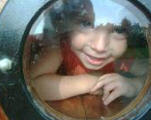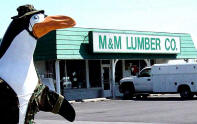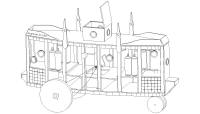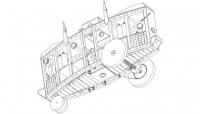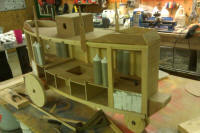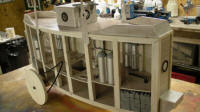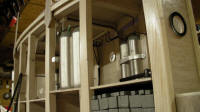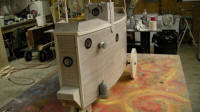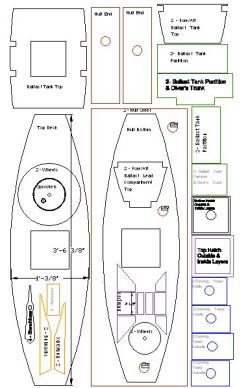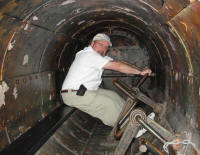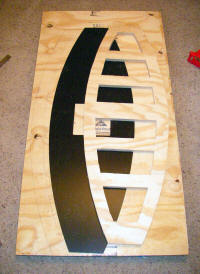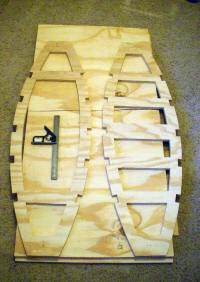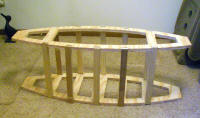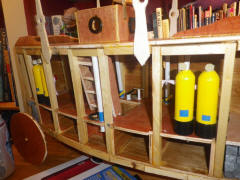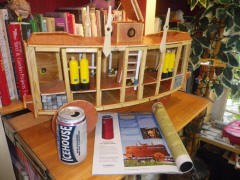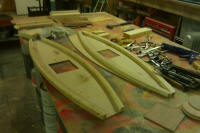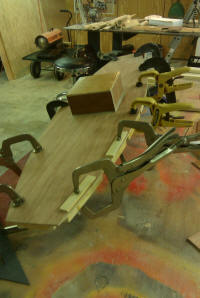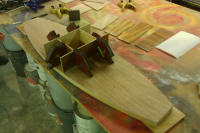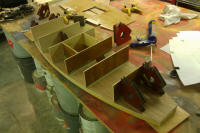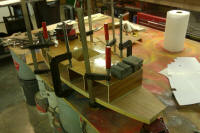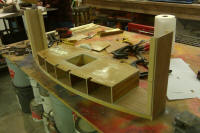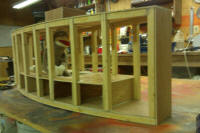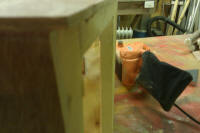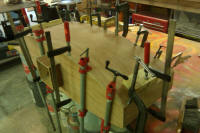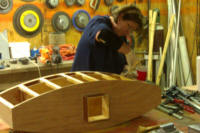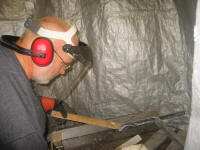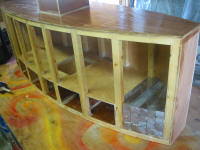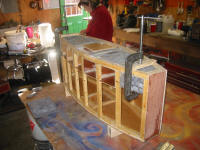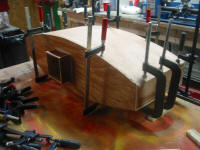|
|
|||||||||||||||||||||||||||||||||
ModelsModels are not just a great way to visualize a piece of history but they are very helpful step in the design and construction process. On this page there different models of the Argonaut Jr., all with a different purpose in mind. The Royal Navy Submarine Museum at Gosport England has a 1/2 scale replica to educate visitors. Before building the actual Argonaut Jr 2010, we constructed two 1/4 scale models. The first was a Crush Test Model to get a rough idea of the structural limits of the design and to verify the freeboard and ballast weight calculations. The second model was a Display Model for educational display but also to determine the best location and routing for pipes and hoses that would controls the submarines ballast tanks and pressurization system. The third Argonaut Jr. model is demonstration purposes. Tim Smalley is building a 1/4 scale Working Model (below) of the original Argonaut Jr. that will dive and surface.
Argonaut Jr. - Display Model
We have built a second 1/4 scale display model. This model will be used be show the workings of the Argonaut Jr 2010. Designing with three dimensional models with CAD is a great way to figure out where things need to go but it is easy to miss details and you can not really get a feel for the order in which the parts should be assembled. So once there is a good CAD drawing it is still helpful to build a model. Not only is it a model a great display, but building a model lets you check that everything will fit and find the best places to put items such as valves, hoses, and air tanks. Want to Build Your Own Model?We will help you with anything you need, please ask. For a start can download the 2D CAD drawings for a 1/4 scale model of the hull here: ArgonautJr_Quarter_Scale_Model.dwg or DFX format. No CAD? No problem. Download this 36 x 60 inch JPG file, take it to your local print shop, trace the 1/4 scale parts onto your 5mm plywood for cutting.
Other Argonaut Jr Models
Computer animation has come a long way, but working, or at least partially functioning models including full scale models still play a valuable role in research but also in movie making. Tim Smalley of St. Paul, Minnesota has been an avid historian and
submarine modeler for years. One of his recent models was of the
prototype of the USS Alligator, sometimes called the "Alligator
Junior." The Alligator
See clips featuring the models from the Science Channel's documentary "Hunt for the Alligator".
Tim SmalleyTim is now building a working model of the Argonaut Jr. (1-3) He started with a CNC cut pattern from CAD drawings of the Argonaut Jr. and constructed a plywood frame that will support the outer hull and the radio controlled components inside the model to make the ascend and descend on command.
Fred Huijgen
Jose BerriosThis model of Argonaut Jr by Jose Berrios who also builds his own submarines that you can see here: The Submarines of Jose Berrios Argonaut Jr. 2010 - Crush Test ModelA 1/4 scale model will let us test the ballast weights as well as get a rough idea of her crush depth. The plywood for the model is 5mm (about 3/16 inch) thick. Four layers of it would be about 3/4" thick. We cut the plywood for the model on our CNC router table. The process starts with the computer designs or CAD. Those drawings are loaded into another program that creates a list of instructions called g-code which list how the router should be moved in the x, y and z axis. Finally the g-code is opened in Mach3 software on a computer that is connected to the motor control box on the CNC router table. The Mach3 software reads the g-code and controls the motors on the CNC table to move the router. For more about CNC checkout: Our CNC Table
Testing the displacement, freeboard, and ballast weight calculations.
|
|||||||||||||||||||||||||||||||||
